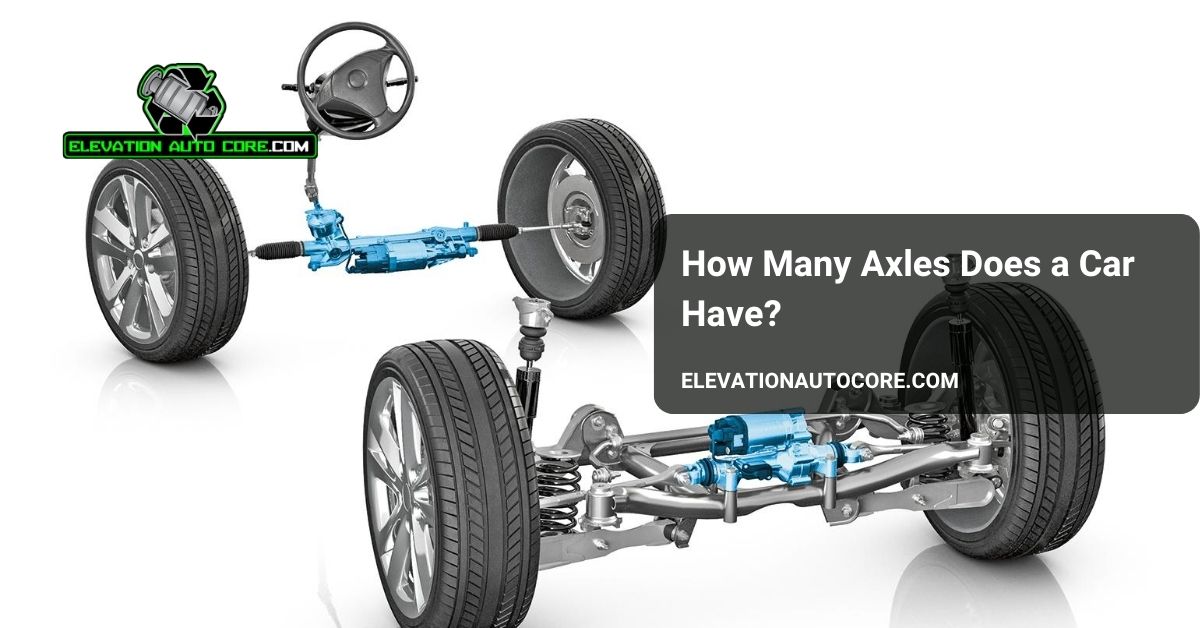How many axles does a car have, and why does it matter? Whether you’re curious about vehicle mechanics or preparing for a driving test, understanding axles is key to grasping how your car operates. From supporting the weight of your vehicle to enabling smooth movement, axles play a vital role—so let’s break it down.
Understanding Axles In A Car

Axles play a critical role in your vehicle’s operation. They connect wheels and transfer the force needed for movement and weight support.
Definition Of An Axle
An axle is a rod or shaft that links a car’s wheels and ensures their rotation. It can be fixed or rotating, depending on design. In most vehicles, axles are key for load-bearing and enabling torque transfer. For example, front-wheel-drive cars use front axles to power their wheels, while rear-wheel-drive cars rely on rear axles.
Importance Of Axles In Vehicle Mechanics
Axles are essential in maintaining a car’s structural integrity. They provide stability under heavy loads and during motion. Properly functioning axles reduce uneven tire wear, prevent accidents, and ensure a smooth driving experience. In modern cars, advanced axles contribute to improved suspension and fuel efficiency. For example, independent rear suspension systems use specialized axles for better performance.
How Many Axles Does A Car Have?

Most cars typically have two axles. These are responsible for connecting the wheels and ensuring smooth rotation during movement.
Determining The Number Of Axles In Standard Cars
Standard cars, including sedans and compact vehicles, usually feature two axles. One axle connects the front wheels, while the other connects the rear wheels. You can visually count them by inspecting the front and rear sections of the car under its chassis. Supporting the vehicle’s weight, these axles are essential for proper function.
Variations In Axle Counts For Different Vehicles
Larger vehicles, like trucks or buses, often require additional axles. For example, heavy-duty trucks can have three or more, depending on the weight and size of the load. Multi-axle designs reduce strain on individual wheels and improve stability. Sports cars may also vary in axle designs, incorporating exact configurations for enhanced performance and speed.
Factors Influencing Axle Count

Various factors determine the number of axles in a car, affecting its function and design. Axle configurations depend on the car’s purpose, size, and operational requirements.
Vehicle Type And Size
A car’s size directly impacts its axle count. Standard passenger cars, such as sedans or hatchbacks, usually have two axles to meet weight and space requirements. Larger vehicles, like trucks or buses, often incorporate three or more axles. This accommodates additional weight and ensures better stability during operation. Compact vehicles designed for city use maintain a simpler two-axle structure, while heavy-duty trucks employ more axles to handle the stress of transporting massive loads.
Purpose And Function Of The Vehicle
The intended use of a vehicle often defines its axle design. Cars built for everyday commuting use a basic two-axle system for efficiency and cost-effectiveness. Performance vehicles, like sports cars, may adopt specialized axle systems to enhance speed and handling. Plus, vehicles designed for industrial or commercial purposes, such as long-haul trucks, rely on multiple axles for durability and load-bearing capacity. Extending axle counts allows these vehicles to meet performance demands, particularly under challenging conditions like rough terrain or heavy cargo transport.
Common Misconceptions About Axles

Many misunderstandings exist about axles and their configurations, often leading to confusion when discussing vehicles. Addressing these misconceptions helps clarify their role and design in different types of vehicles.
Clarifying Overlapping Terminology
Some terms related to axles are used interchangeably, but they may refer to different components. Axles and driveshafts, for example, are distinct. The axle connects wheels, while the driveshaft transfers engine power to the axle. Understanding this distinction prevents errors when discussing car mechanics.
The phrase “live axle” sometimes confuses people due to its technical nature. A live axle both supports the car’s weight and transfers power to the wheels. In contrast, a dead axle only supports weight and doesn’t deliver power. Knowing these terms avoids misinterpretation in casual or technical discussions.
Myths Around Axle Configurations
A common belief is that all cars have the same number of axles. While standard passenger cars like sedans have two axles, other vehicles deviate significantly. Trucks often feature three or more axles when designed for heavier loads. Using visual checks, like inspecting wheel connections under the chassis, can reveal the accurate axle count.
Another misconception relates to sports cars. Many assume their axle arrangement mirrors standard vehicles. In reality, performance cars often use advanced axle designs to enhance speed, maneuverability, and suspension. This challenge to conventional assumptions underscores the uniqueness of axle setups across vehicle types.
Conclusion
Understanding axles gives you valuable insight into how your car operates and why its design matters. Whether you’re driving a standard sedan, a high-performance sports car, or a heavy-duty truck, axles play a critical role in ensuring safety, stability, and efficiency on the road.
By familiarizing yourself with axle configurations and their purpose, you’re better equipped to maintain your vehicle and make informed decisions about its care or upgrades. Axles may not always be visible, but their impact on your driving experience is undeniable.

